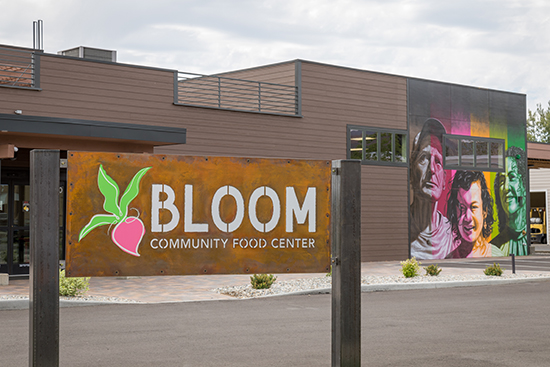
Can community services support its residents’ goodwill?
By Eric Valentine
News that one of the Valley’s most cherished and utilized nonprofits‚ The Hunger Coalition, was requesting people cut back on its food pantry usage to twice monthly brought post-pandemic life into focus a little more harshly this week. Among other things, it triggered questions about whether an alleged influx of refugees or asylum seekers to the Valley was having unsustainable impacts to an area already battling a housing shortage.
What follows is The Hunger Coalition’s response to questions asked by Wood River Weekly.
Q: A couple of calls came into Wood River Weekly that indicated at least some people feel if the influx of Peruvian immigrants didn’t happen, there’d be no change in service happening. Can you shed any light on this?
A: We’ve adapted our emergency food distribution to provide the best possible experience for participants and make the increase in need more manageable for our staff. While there have been no cuts to our programming, we have shifted our model; essentially sharing more food less frequently.
While we still have three weekly distributions, we are temporarily staggering traffic flow by asking our participants to shop every other week and giving them more grocery points with which to shop. We hope this change will allow us to do what we’ve always done—provide emergency food to everyone who needs it efficiently and compassionately.
No Blaine County resident who needs food is being turned away.
The recent changes to our distribution are in response to a record demand for food. This is a result of
economic pressures on our labor force—the root causes of hunger like wages, housing, and health crisis, compounded by the pandemic and an increase in working families seeking employment in Blaine County who are struggling to secure housing and fair wages.
There’s no one kind of person who experiences hunger and we are doing everything we can to rise to the needs of all families who need food.
Q: There are 20 full-time staff now. How many volunteers do you have now and how many more are needed?
A: We have an incredible team of volunteers who have made it possible for us to accommodate the record demand for food. However, after having to shut down our volunteer program during the COVID pandemic, we never quite regained the number of long-term volunteers we need to help run our suite of programs efficiently.
Our programs go beyond emergency food distributions and include Community Meals, Bloom Youth Project, Volunteer for Veggies, Children’s Food Programs, and more. All of these programs are made possible with volunteer support. In the last month, we have had 68 volunteers give an average of five hours each across all programs.
Our most urgent need is long-term volunteers to work weekly in the warehouse, packing food boxes, stocking shelves, breaking down cardboard, who are interested in a physically demanding opportunity.
Q: Can you give an example of how it’s a food distribution issue more than a food supply issue?
A: Our weekly service numbers have increased 240% since January 2020.
Q: Can you confirm this statement that was in the Mountain Express: “According to The Hunger Coalition, 586 new families have started utilizing its food pantry since January, which is 47% of the total number of families it serves.”
A: Of the new families, 322 are from Peru and are seeking asylum; 156 of the families include children. About 40 to 60 of these families are living outside, while the rest are couch-surfing or have similar temporary arrangements. Our numbers fluctuate weekly, but we are seeing a substantial increase in need since January.


